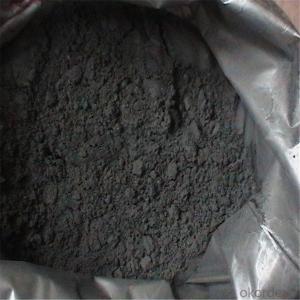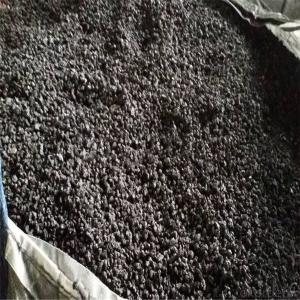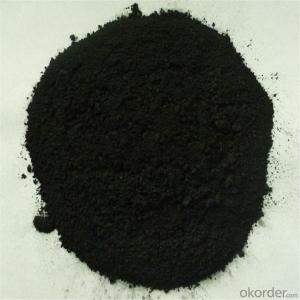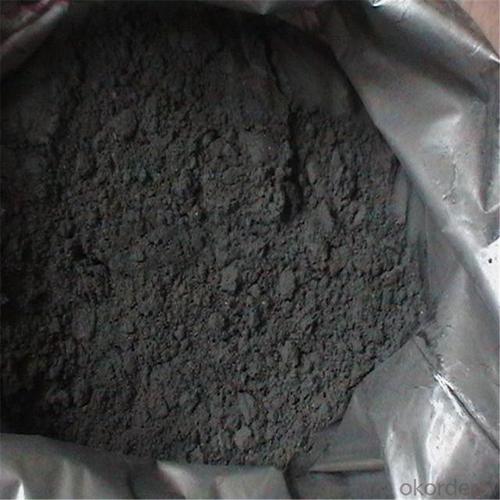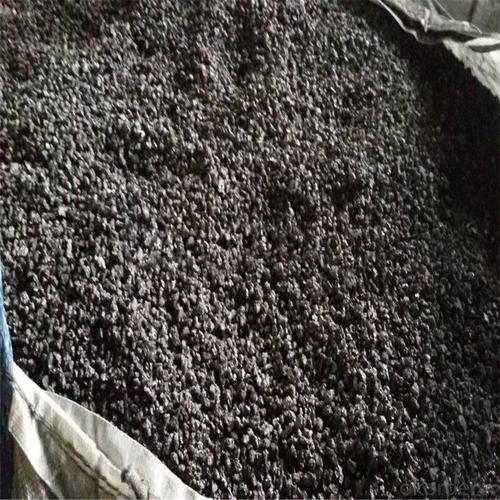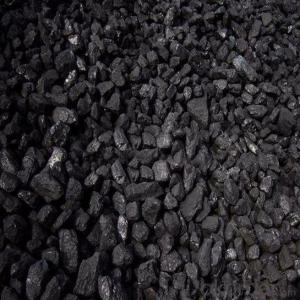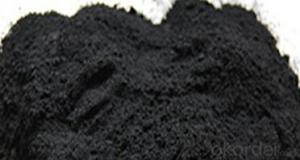Graphite carbon additive graphite recarburizer graphite powder
- Loading Port:
- Dalian
- Payment Terms:
- TT OR LC
- Min Order Qty:
- 10 m.t
- Supply Capability:
- 500000 m.t/month
OKorder Service Pledge
OKorder Financial Service
You Might Also Like
Specifications of graphite powder:
- 98%-99% graphite powder
- high fixed carbon
- low sulphur and nitrogen
- ten year experience in processing of graphite products
- Graphite powder / Graphite carburant
Graphite powder purposes:
- As non-metallic mineral resources, has important defense strategic role
- Can be used for high and new technical projects, is of great economic and social benefits
- Is the metallurgical industry refractory material
- Is the chemical industry all kinds of corrosion of vessels, general equipment of carbon products
- Light industry is in pencil, ink and the main raw material of artificial diamond
- Is the electrical industry production carbon electrode and electrode carbon rods, battery materials
Graphite powder data sheet:
Our carbon additive has the features of high carbon, low sulphur, nitrogen and harmful impurities. So it has been widely used for steel-smelting, casting, brake pedal and friction material. | |||||||
Data sheet | |||||||
Product No. | Fixed Carbon | Sulphur | Ash | Volatile Matter | Moisture | Particle Size | Nitrogen Content |
Min | Max | Max | Max | Max | 90% | Max | |
HY-CA-01 | 98.5% | 0.50% | 0.80% | 0.80% | 0.50% | 1-5MM | N/A |
HY-CA-02 | 99.00% | 0.30% | 0.50% | 0.50% | 0.50% | 1-5MM | 100PPM |
HY-CA-03 | 98.50% | 0.05% | 0.80% | 0.70% | 0.50% | 0.3-5MM | 300PPM |
HY-CA-04 | 95.00% | 0.30% | 3.50% | 1.50% | 0.50% | 1-4MM | 700PPM |
HY-CA-05 | 99.00% | 0.03% | 0.50% | 0.50% | 0.50% | 0.3-5MM | 300PPM |
HY-CA-06 | 80.00% | 0.10% | 16.50% | 3.50% | 2.00% | 1-5MM | N/A |
Remark:The above mentioned grain sizes are recommended standard, if your have special requirements, please feel free to contact us. | |||||||

- Q: How does carbon contribute to the hardness of steel?
- Carbon contributes to the hardness of steel through a process known as carbonization. When carbon atoms are introduced into the iron lattice of steel, they create interstitial solid solutions, causing the lattice to become distorted. This distortion prevents the iron atoms from sliding past each other easily, thereby increasing the resistance to deformation and making the steel harder. Increasing the carbon content in steel increases the strength and hardness, up to a certain limit. However, excessive carbon can also make the steel brittle, so it is important to find the right balance to achieve optimal hardness without compromising other properties of the steel.
- Q: What are the consequences of increased carbon emissions on urban areas?
- Urban areas are significantly affected by the increase in carbon emissions, which have notable impacts on various aspects. One of the most significant consequences is the worsening of air pollution. The release of harmful pollutants like nitrogen oxides and particulate matter is contributed by carbon emissions, especially from vehicles and industrial activities. These pollutants can cause respiratory problems, worsen existing health conditions, and increase the risk of lung cancer and cardiovascular diseases among urban residents. Moreover, the increase in carbon emissions leads to the occurrence of urban heat islands. This happens because carbon dioxide and other greenhouse gases trap heat in the atmosphere, resulting in higher temperatures in urban areas. This effect is particularly pronounced due to the abundance of concrete and asphalt surfaces that absorb and radiate heat. Consequently, urban areas experience higher temperatures compared to nearby rural areas, further intensifying the discomfort and health risks associated with heat stress, particularly for vulnerable populations like the elderly and those with limited access to cooling resources. The consequences of increased carbon emissions also extend to the natural environment. Urban green spaces and ecosystems are negatively affected as higher levels of carbon dioxide disrupt plant growth and reduce biodiversity. This exacerbates the loss of natural habitats and the degradation of urban ecosystems, leading to a decline in the provision of ecosystem services such as air purification, temperature regulation, and stormwater management. Additionally, increased carbon emissions have economic implications for urban areas. As carbon emissions rise, the cost of addressing climate change-related challenges like flooding and extreme weather events increases. This puts a strain on the budgets of local governments and may result in higher taxes or reduced funding for other essential services. To tackle these consequences, it is crucial for urban areas to implement strategies that reduce carbon emissions and promote sustainability. This includes investing in public transportation, encouraging the use of renewable energy sources, promoting energy-efficient buildings, and implementing policies to reduce vehicle emissions. By adopting these measures, urban areas can mitigate the negative effects of increased carbon emissions and create healthier, more sustainable environments for their residents.
- Q: What are the consequences of increased carbon emissions on coral reefs?
- Coral reefs are severely impacted by the increased emission of carbon, resulting in numerous consequences. One major effect is the occurrence of ocean acidification, which happens when excess carbon dioxide is absorbed by seawater, causing a decrease in pH levels. This acidification hampers the ability of corals to construct their calcium carbonate skeletons, making them more susceptible to erosion and breakage. Moreover, elevated levels of carbon dioxide in the atmosphere contribute to global warming, leading to the rise of ocean temperatures. Consequently, coral bleaching occurs as corals expel the symbiotic algae responsible for their vibrant colors. Without these algae, corals become stressed, lose their color, and become more vulnerable to disease and death. Additionally, increased carbon emissions contribute to alterations in ocean currents and weather patterns, resulting in more frequent and intense storms. These storms physically damage coral reefs, causing further destruction to already fragile ecosystems. The consequences of increased carbon emissions on coral reefs are profound and devastating. The decline of coral reefs not only impacts the biodiversity of the oceans but also has significant implications for human populations that rely on reefs for sustenance, income, coastal protection, and tourism. It is imperative to reduce carbon emissions and take immediate action to safeguard and preserve these invaluable ecosystems.
- Q: What are the consequences of increased carbon emissions on educational systems?
- Increased carbon emissions can have several consequences on educational systems. Firstly, the health impacts of pollution caused by carbon emissions can lead to increased absenteeism among students and teachers, affecting the overall learning environment. Additionally, extreme weather events linked to climate change, such as hurricanes or heatwaves, can disrupt educational infrastructure, leading to school closures and disruptions in academic schedules. Moreover, the need to address climate change and its impacts may require educational institutions to allocate resources and curriculum time to climate-related topics, potentially diverting attention and resources from other subjects. Finally, the long-term consequences of climate change, such as rising sea levels or increased natural disasters, may force the relocation or rebuilding of educational facilities, causing significant disruptions to students' education.
- Q: What are the effects of carbon dioxide on ocean acidity?
- Carbon dioxide (CO2) has a significant impact on ocean acidity, leading to a phenomenon known as ocean acidification. When CO2 is released into the atmosphere through human activities such as burning fossil fuels, it gets absorbed by the oceans. This absorption process triggers a series of chemical reactions that result in the formation of carbonic acid, which lowers the pH of the seawater. The increased concentration of carbonic acid in the oceans disrupts the delicate balance of carbonate ions, which are essential for the formation of calcium carbonate. Many marine organisms, including coral reefs, shellfish, and plankton, rely on calcium carbonate to build their shells and skeletons. As the ocean becomes more acidic, the concentration of carbonate ions decreases, making it increasingly difficult for these organisms to form and maintain their protective structures. Ocean acidification poses a significant threat to marine ecosystems and biodiversity. Coral reefs, for example, are particularly vulnerable to the effects of acidification. As the acidity increases, the coral's ability to build and maintain its calcium carbonate structure is compromised, leading to the bleaching and eventual death of the reef. This loss of coral reefs has severe consequences for the countless species that depend on these ecosystems for food, shelter, and reproduction. Furthermore, ocean acidification also affects other marine organisms, such as shellfish and plankton. Shellfish, including oysters, clams, and mussels, depend on calcium carbonate to form their shells. As the acidity rises, the availability of carbonate ions decreases, making it harder for these organisms to build their protective shells. This, in turn, can result in reduced populations of shellfish, impacting not only the organisms themselves but also the industries and communities that rely on them for economic and cultural reasons. Plankton, which are the foundation of the marine food web, are also susceptible to the effects of increased ocean acidity. Many plankton species have calcium carbonate structures that provide them with buoyancy and protection. As the acidity rises, these structures weaken, making it harder for plankton to survive and reproduce. This disruption in the plankton community can have far-reaching consequences for the entire marine food chain, impacting fish, marine mammals, and ultimately, humans who rely on seafood as a primary source of protein. In conclusion, the effects of carbon dioxide on ocean acidity are significant and alarming. Ocean acidification threatens the health and stability of marine ecosystems, impacting vital organisms like coral reefs, shellfish, and plankton. Understanding and addressing this issue is crucial for the long-term health of our oceans and the countless species that depend on them.
- Q: What is the thickness of carbon fiber heating?
- Tile floor pavement thickness generally in 4,5 cm, composite floor that cement cushion thickness is generally 3,4 cm, a Ji'nan to do this as if the thickness reach 3 cm, composite floor to reach 2 cm, also does not affect the results, suitable for thin layer height of the house now, is Ji'nan Dilong carbon fiber applied Technology Development Company
- Q: What are the different types of carbon-based alloys?
- There are several different types of carbon-based alloys, each with unique properties and applications. Some of the most common types include: 1. High carbon steel: This type of alloy contains a high percentage of carbon, typically between 0.6% and 1.5%. It is known for its strength and hardness, making it suitable for applications such as tools, knives, and automotive parts. 2. Low carbon steel: Also known as mild steel, this alloy has a lower carbon content, usually below 0.3%. It is more malleable and ductile than high carbon steel, making it suitable for applications that require forming and welding, such as construction and automotive components. 3. Stainless steel: A popular alloy that contains chromium, nickel, and other elements, stainless steel is highly resistant to corrosion and staining. It is commonly used in kitchen utensils, medical equipment, and construction. 4. Cast iron: This alloy contains a higher carbon content, typically between 2% and 4%. It is known for its excellent heat retention and is commonly used in cookware, pipes, and engine blocks. 5. Tool steel: Designed for making cutting tools, this alloy has a high carbon content, typically between 0.7% and 1.4%. It offers excellent hardness, wear resistance, and heat resistance. 6. Carbon fiber reinforced polymers (CFRP): These alloys consist of carbon fibers embedded in a polymer matrix. They are lightweight, strong, and have high stiffness, making them ideal for applications such as aerospace, sports equipment, and automotive parts. Overall, carbon-based alloys offer a wide range of properties and applications, making them versatile materials in various industries.
- Q: What is carbon neutral packaging?
- Carbon neutral packaging refers to packaging materials and processes that have a net zero carbon footprint. This means that the amount of carbon dioxide (CO2) emissions released during the production, transportation, and disposal of the packaging is offset by an equal amount of CO2 being removed from the atmosphere or not being emitted in the first place. To achieve carbon neutrality, various strategies can be employed. One common approach is to use renewable or recycled materials for packaging, such as paper or bioplastics made from plant-based sources. These materials have a lower carbon footprint compared to traditional petroleum-based plastics. Additionally, reducing the overall amount of packaging used and optimizing the design to minimize waste can also contribute to carbon neutrality. Another important aspect of carbon neutral packaging is the offsetting of unavoidable emissions. This can be done through investing in projects that reduce greenhouse gas emissions elsewhere, such as reforestation or renewable energy initiatives. By supporting these projects, the carbon emissions generated by the packaging are balanced out, resulting in a net zero impact on the environment. The concept of carbon neutral packaging is gaining popularity as businesses and consumers become more aware of the environmental impact of their choices. It provides a way to reduce the carbon footprint associated with packaging, ultimately contributing to a more sustainable and eco-friendly future.
- Q: Carbon 60 related information
- The 60 is the solid carbon black, graphite and diamond. In addition, in recent years, scientists have discovered that some exist in new form of elemental carbon, which is more important in 1985 found C60. C60 is a molecule made up of 60 carbon atoms, similar to football. At present, people have made great progress in the research of C60, and the application of C60 in superconductor, material science and other fields is deepening. In our country, great achievements have been made in this field. For example, the metal doped C60 superconductor has been successfully developed in collaboration with the Physics Institute of Peking University and the Chinese Academy of sciences. It can be said that the discovery of C60 is of great importance to the study of carbon chemistry and even the whole field of chemistry.
- Q: How is carbon used in the production of carbon fiber?
- Carbon is a crucial component in the production of carbon fiber. Carbon fibers are made by subjecting a precursor material, usually a type of polymer such as polyacrylonitrile (PAN) or rayon, to a series of heating and chemical treatments. The precursor material is first heated to a high temperature in the absence of oxygen, a process known as carbonization. During this stage, the precursor undergoes pyrolysis, which breaks down the molecular structure and removes non-carbon elements like hydrogen, oxygen, and nitrogen. After carbonization, the resulting material is a carbon-rich structure known as a carbonized fiber or char. However, the material is still not considered carbon fiber at this point. To transform the char into carbon fibers, it undergoes further processing steps called stabilization and graphitization. During stabilization, the char is heated in the presence of oxygen, which leads to the formation of cross-linked structures. This step helps to improve the fiber's thermal stability and prevents it from shrinking or deforming during subsequent processing. The stabilized material is then heated to a higher temperature in an inert atmosphere during graphitization. This process aligns the carbon atoms within the fiber, creating a highly ordered and crystalline structure. Throughout this entire process, carbon is the main building block of the resulting carbon fiber. Starting from the precursor material, which contains carbon atoms, the carbonization and graphitization steps remove impurities and rearrange the carbon atoms to form a strong and lightweight fiber. The resulting carbon fiber exhibits exceptional properties such as high strength-to-weight ratio, stiffness, and resistance to heat and chemicals, making it a valuable material in various industries, including aerospace, automotive, and sporting goods.
Send your message to us
Graphite carbon additive graphite recarburizer graphite powder
- Loading Port:
- Dalian
- Payment Terms:
- TT OR LC
- Min Order Qty:
- 10 m.t
- Supply Capability:
- 500000 m.t/month
OKorder Service Pledge
OKorder Financial Service
Similar products
Hot products
Hot Searches
Related keywords
